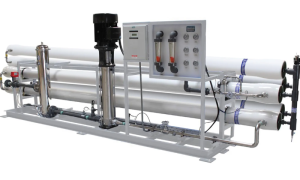Global Pharmaceuticals Industry Outlook 2023
Demand for Covid-19 vaccines and personal protective equipment drove global pharmaceutical production to grow by 14% in 2021, followed by a 3% increase in 2022.
Drugs targeting life-threatening conditions are driving growth in the Americas
Strong performance of drugs targeting cancer, diabetes and other life-limiting conditions in the region. Although he acknowledges the pressures that areas such as high inflation, regional legislation and another patent cliff pose for pharmaceutical companies. Continued demand represented by the region’s aging population.
Will high energy prices burn out European pharmaceuticals?
The pressure that energy price headwinds are putting on the growth of the pharmaceutical industry in Europe. Despite this, however, the longer-term outlook for the sector is good and highlights the opportunities presented by new technologies. How, artificial intelligence, big data and new approaches to clinical trials have the potential to drive growth across the region.
In addition to examining areas such as the impact of environmental issues, reshoring and government regulation, business sector experts identify the three biggest opportunities and three main challenges to growth in the pharmaceutical industry in their regions.
Global Outlook for Pharmaceutical Industry?
Many areas of the pharmaceutical industry saw rapid growth in 2020 and 2021, driven primarily by Covid-induced demand for vaccines and personal protective equipment. In 2021, industrial production grew by an amazing 14%. Although growth has now slowed significantly, it is not a boom and bust case for the industry as market still expect global growth to remain above 3% for the next few years. However, global high inflation affects consumer spending and is likely to cause the biggest problems, such as personal hygiene and over-the-counter medicines. The end of China’s zero-Covid policy in early 2023 has provided a boost to pharmaceuticals around the world. The reopening of China’s economy is helping to reduce tensions in global supply chains and, in particular, global access to active pharmaceutical ingredients (APIs) produced in China.
Emerging Economies Demand for Pharma Sector
Much of this growth will be driven by increased demand in emerging economies as healthcare systems improve and household incomes expand. Generic and OTC manufacturers will be the first to benefit, especially in China, India and Southeast Asia. In addition, Asia Pacific’s share of global pharmaceutical production will increase from 36% in 2022 to 42% in 2030. China’s share of global production will increase from 25% in 2022 to 30% in 2030.
Asia Pacific demand
Asia Pacific China’s dominant position as the world’s major drug manufacturing center will help fuel the financial strength of the pharmaceutical industry in Asia Pacific. In addition, most pharmaceutical companies in Japan and India have strong balance sheets and good access to bank financing. An aging population and an expanding middle class in the region will fuel the growth and financial strength of pharmaceutical manufacturers in the region. In China, market expects the number of households with income above US$35,000 to increase to 152 million in 2026 from an estimated 65 million in 2020. This will contribute to spending on high value-added pharmaceuticals. At the same time, China’s population is starting to age, which will increase the demand for medicines related to chronic diseases such as diabetes.
European Pharmaceutical Market
Different challenges faced by different sizes of pharmaceutical companies in Europe. In Europe, large pharmaceutical companies often have significant financial resources due to their global operations, diversified product portfolio and extensive marketing networks. These companies invest heavily in research and development, but also tend to have strong sources of revenue from sales of both patented drugs and generic versions. On the other hand, smaller pharmaceutical companies and specialty biotech firms may have more focused operations and less financial capacity.
They often rely on venture capital funding or partnerships with larger companies to support their R&D efforts. These companies may be more vulnerable to market volatility and may suffer the consequences of higher funding costs. Pharmaceutical financial indicators are largely strong, but some medium and small companies could face funding challenges due to the high research investment required and development, competition from companies based in India and China and difficult access to financing. at competitive interest rates.
North and South America
The U.S. pharmaceutical sector remains vulnerable to headwinds from inflationary pressures as well as labor shortages, product liability disputes and government pressures to lower drug costs for consumers. Despite this, the industry extremely resilient, with continued demand driven by an aging population that will continue to fuel industry growth.



























